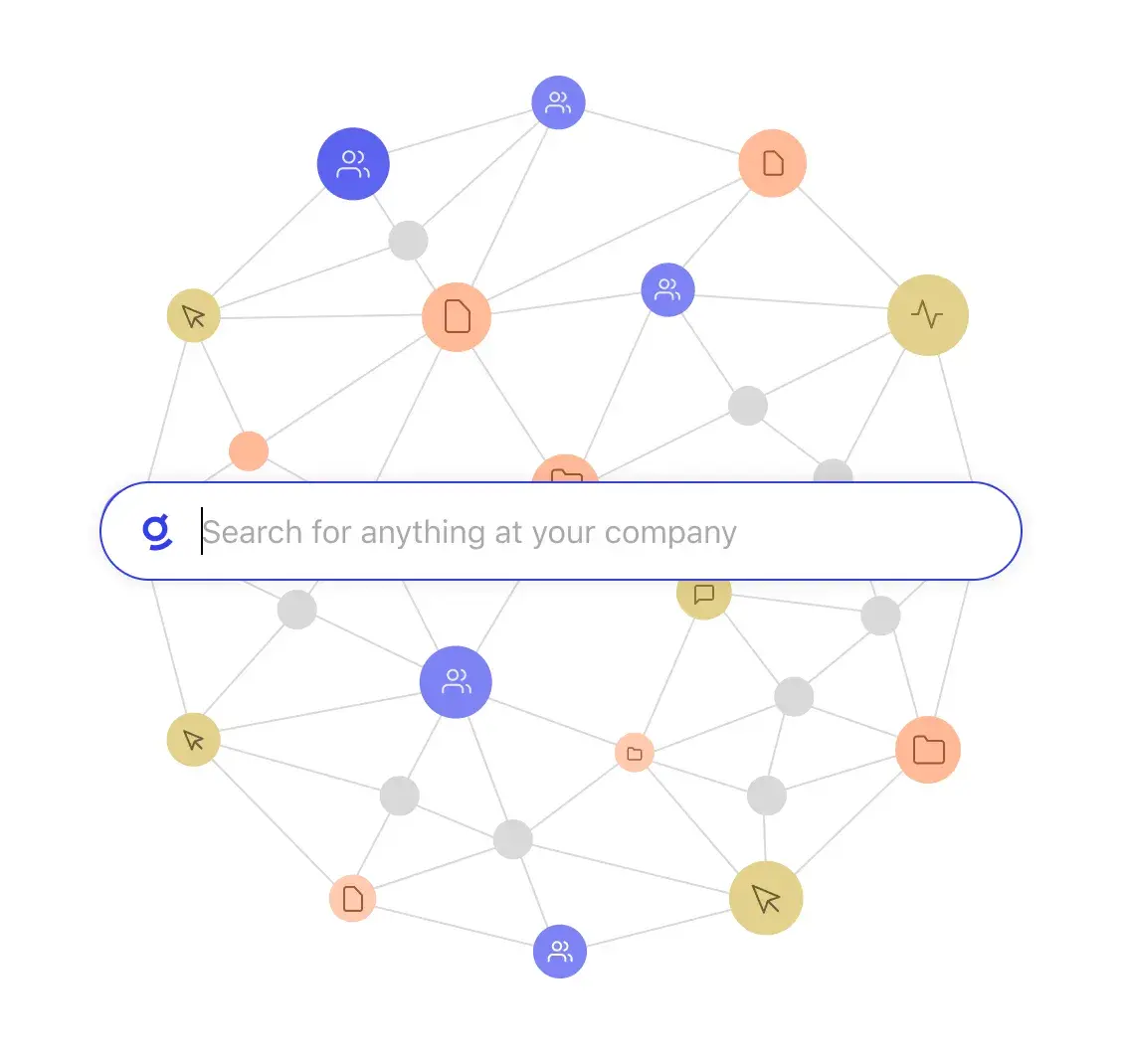Cognitive search: What it is & how it works (Guide for 2024)
.webp)
Cognitive Search is a sophisticated approach to information retrieval that employs Artificial Intelligence (AI), Natural Language Processing (NLP), and machine learning to understand, organize search index, and retrieve digital content from multiple sources. Unlike traditional search technologies, it goes beyond keyword matching to comprehend user intent, making sense of unstructured data to provide insightful and accurate results. Cognitive search systems are capable of self-learning, dynamically refining their algorithms as they process new data.
Cognitive search technologies
Cognitive search technologies empower search systems to understand, interpret, and manage unstructured data by applying AI methods. They significantly enhance the accuracy and contextuality of search results.
Machine learning
Machine learning algorithms are the backbone of cognitive search. They enable systems to learn from data, identify patterns, and make decisions with minimal human intervention. For instance, they can be utilized to improve search relevance by continuously learning from users' search behaviors and adjusting the search algorithms accordingly.
Natural Language Understanding
Natural Language Understanding (NLU) capabilities allow cognitive search tools to comprehend and interpret human language. With NLU, search technologies can process and analyze text in a way that identifies the sentiment, intent, and contextual meaning behind users' search queries, leading to more relevant search results.
Computer vision
Computer vision is a field that imparts the capability for machines to identify and process visual information. In cognitive search, this technology enables the analysis of images and videos, extending the search capabilities beyond text to include visual content recognition and classification.
Speech recognition
Speech recognition technology transmutes spoken words into digital data that the search engine and systems can understand and process. It significantly simplifies human interaction with search engines, allowing users to perform searches using voice commands and receive information without the need to type.
How does cognitive search work?
Cognitive search operates through a multifaceted process that involves several core technologies working in unison to understand, index, and retrieve relevant information together. Here’s a breakdown of how it functions:
- Data ingestion and indexing: Initially, cognitive search systems ingest data from various sources, including documents, emails, databases, and more. This data, often unstructured, is indexed to make it searchable. Advanced techniques ensure the indexing accommodates diverse data formats and structures.
- Understanding queries: When a query is entered, the system employs Natural Language Understanding (NLU) to interpret the intent and context of the user’s request, far beyond simple keyword matching. This understanding allows the system to consider synonyms, related terms, and the overall meaning of the query.
- Content analysis and retrieval: With the aid of machine learning algorithms and NLP, the system analyzes the content within its index to find matches that are relevant to the query's intent and context. This stage often involves semantic search techniques, which understand the query’s and the documents’ meanings rather than relying solely on keyword overlaps.
- Personalization and relevance tuning: Cognitive search systems leverage user interaction data to refine and personalize search results. Machine learning models observe patterns in user behavior to adjust and improve the relevance of search outcomes over time, tailoring results to individual preferences.
- Presentation of results: Finally, the system presents the most relevant results to the user, often ranked by relevance. The results can include a variety of content types, from text documents to images and videos, all contextualized to the user's query.
Benefits of cognitive search
Cognitive search technology transforms the landscape of information retrieval with numerous advantages over traditional search technologies, marking a significant advancement in how we find and use information:
- Enhanced accuracy and relevance: Cognitive search's deep understanding of query intent and context ensures results are highly accurate and relevant. This leads to greater user satisfaction and efficiency in locating necessary information.
- Comprehension of unstructured data: It excels in making sense of unstructured data, which constitutes the bulk of organizational data. Analyzing text, images, videos, and speech, cognitive search reveals valuable insights that were previously difficult to access.
- Improved user experience: By allowing natural language queries and voice search, cognitive search technologies offer an intuitive and engaging user experience. This makes interacting with search systems more natural and user-friendly.
- Personalization: The ability to learn from user interactions enables cognitive search systems to tailor results to individual preferences, significantly enhancing the relevancy and precision of information presented.
- Efficiency in data retrieval: Cognitive search streamlines the process of finding information across extensive and varied datasets, boosting productivity. Users gain faster access to needed information, which accelerates decision-making and operational workflows.
- Cross-lingual and multimodal capabilities: Supporting multiple languages and content types, cognitive search facilitates cross-lingual searches and the retrieval of multimodal content, ensuring users can find information regardless of its original format or language.
- Scalability and adaptability: Designed to scale with growing data volumes and adapt to changing business needs, cognitive search platforms maintain their effectiveness over time, even as content types and user expectations evolve.
Knowledge discovery: One of the most transformative benefits of cognitive search is its unparalleled capacity for knowledge discovery. By analyzing and linking together disparate pieces of information across a vast array of sources, cognitive search tools unearth patterns, trends, and insights that would otherwise remain hidden. This capability not only enriches the search experience but also opens up new avenues for innovation, strategic decision-making, and uncovering previously unknown connections and opportunities.

Use cases of cognitive search
Implementing cognitive search enhances information retrieval across diverse data sets, applying AI to interpret and surface relevant content.
Enterprise search
In the workplace, cognitive search platforms enable employees to quickly find and access company information stored across various databases and document management systems. Organizations improve productivity as staff members efficiently locate precise files, data reports, and internal communications without navigating through disparate systems or directories.

E-commerce
E-commerce sites utilize cognitive search to improve customer experience. Shoppers find products and services faster because search engines understand natural language queries and intent. Equipped with machine learning, these search systems continuously learn from user interactions, which helps in delivering accurate and personalized results to customers.
Digital assistants
Cognitive search empowers digital assistants to process complex user queries, accessing a wide array multiple data sources of structured and unstructured data. These assistants provide relevant, contextual information or perform certain tasks, enhancing user interactions with devices and applications through more natural conversational experiences.
Data analytics
Analysts apply cognitive search to large datasets for enhanced data discovery and insights. By aggregating and analyzing data from multiple sources, cognitive search creates businesses make informed decisions based on comprehensive search results that include unstructured data such as emails, social media posts, and documents.
What is the difference between generative AI and cognitive search?
While both involve ai technologies, sophisticated algorithms and advanced technologies, they serve different purposes and exhibit distinct characteristics. Understanding the differences between them is crucial for leveraging their respective capabilities effectively in various applications.
<div class="overflow-scroll">
<table class="rich-text-table_component">
<thead class="rich-text-table_head">
<tr class="rich-text-table_row">
<th class="rich-text-table_header">Aspect</th>
<th class="rich-text-table_header">Generative AI</th>
<th class="rich-text-table_header">Cognitive search</th>
</tr>
</thead>
<tbody class="rich-text-table_body">
<tr class="rich-text-table_row">
<td class="rich-text-table_cell is-text-center">
Purpose and functionality
</td>
<td
data-w-id="6a5e5976-72dc-f77b-1963-04fbedc41262"
data-wf-id='["6a5e5976-72dc-f77b-1963-04fbedc41262"]'
class="rich-text-table_cell is-text-center"
>
Focuses on creating new content like images, text, or music based on
training data patterns.
</td>
<td class="rich-text-table_cell is-text-center">
Geared towards retrieving and analyzing existing information from vast
datasets to enhance search experience.
</td>
</tr>
<tr class="rich-text-table_row">
<td class="rich-text-table_cell is-text-center">Data utilization</td>
<td class="rich-text-table_cell is-text-center">
Requires substantial training data to learn and generate meaningful
output.
</td>
<td class="rich-text-table_cell is-text-center">
Leverages existing data sources such as documents, databases, and web
pages for retrieval and analysis.
</td>
</tr>
<tr class="rich-text-table_row">
<td class="rich-text-table_cell is-text-center">Applications</td>
<td class="rich-text-table_cell is-text-center">
Used in creative fields like art, design, and content generation.
</td>
<td class="rich-text-table_cell is-text-center">
Widely employed in knowledge management, enterprise search, and
information retrieval systems.
</td>
</tr>
<tr class="rich-text-table_row">
<td class="rich-text-table_cell is-text-center">Human interaction</td>
<td class="rich-text-table_cell is-text-center">
Typically operates autonomously once trained without human
intervention during generation.
</td>
<td class="rich-text-table_cell is-text-center">
Involves human interaction for query refinement, relevance feedback,
or content curation.
</td>
</tr>
<tr class="rich-text-table_row">
<td class="rich-text-table_cell is-text-center">
Complexity and training
</td>
<td class="rich-text-table_cell is-text-center">
Complex and resource-intensive to train due to the volume of
parameters and data involved.
</td>
<td class="rich-text-table_cell is-text-center">
Can be complex but doesn't usually require as much computational
resources for training as generative AI.
</td>
</tr>
</tbody>
</table>
</div>
Challenges and future directions
The adoption of cognitive search technology poses distinct challenges and prompts ongoing research into future advancements. These issues necessitate careful consideration to ensure the responsible development and scaling of cognitive search technologies.
Ethical considerations
As cognitive search systems become more advanced, they must handle data responsibly to respect user autonomy and fairness. Developers are tasked with ensuring that algorithms do not perpetuate biases or infringe on ethical standards. They must regularly update and audit systems to prevent unethical practices.
Privacy and security
Cognitive search tools process vast amounts of personal data, making privacy and security paramount. Implementing robust encryption and access controls safeguards against unauthorized data breaches. Meanwhile, maintaining transparency with users about data handling practices helps uphold trust.
Scalability issues
The scalability of cognitive search is crucial for handling growing data volumes. Efficient indexing and query processing mechanisms are needed for large-scale applications. Overcoming hardware limitations and optimizing software to accommodate more users is central to scalability efforts.
Ongoing research
Researchers continually strive to enhance cognitive search capabilities through machine learning, natural language processing, and semantic understanding. Active research focuses on improving accuracy, relevance, and context-awareness of search results. Moreover, there's a push to make cognitive search more adaptive and personalized for individual user needs.
In conclusion, cognitive search represents a significant leap forward in the evolution of search technologies. Cognitive search not only improves the efficiency and accuracy of information retrieval but also offers an intuitive, user-friendly experience. As we move into 2024 and beyond, its applications across enterprises, e-commerce, digital assistants, and data analytics promise to transform how we access and interact with information.
{{richtext-cta-component}}
Related articles


